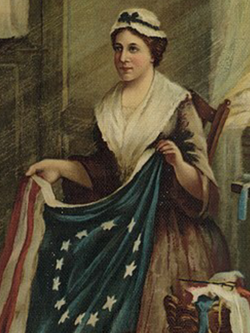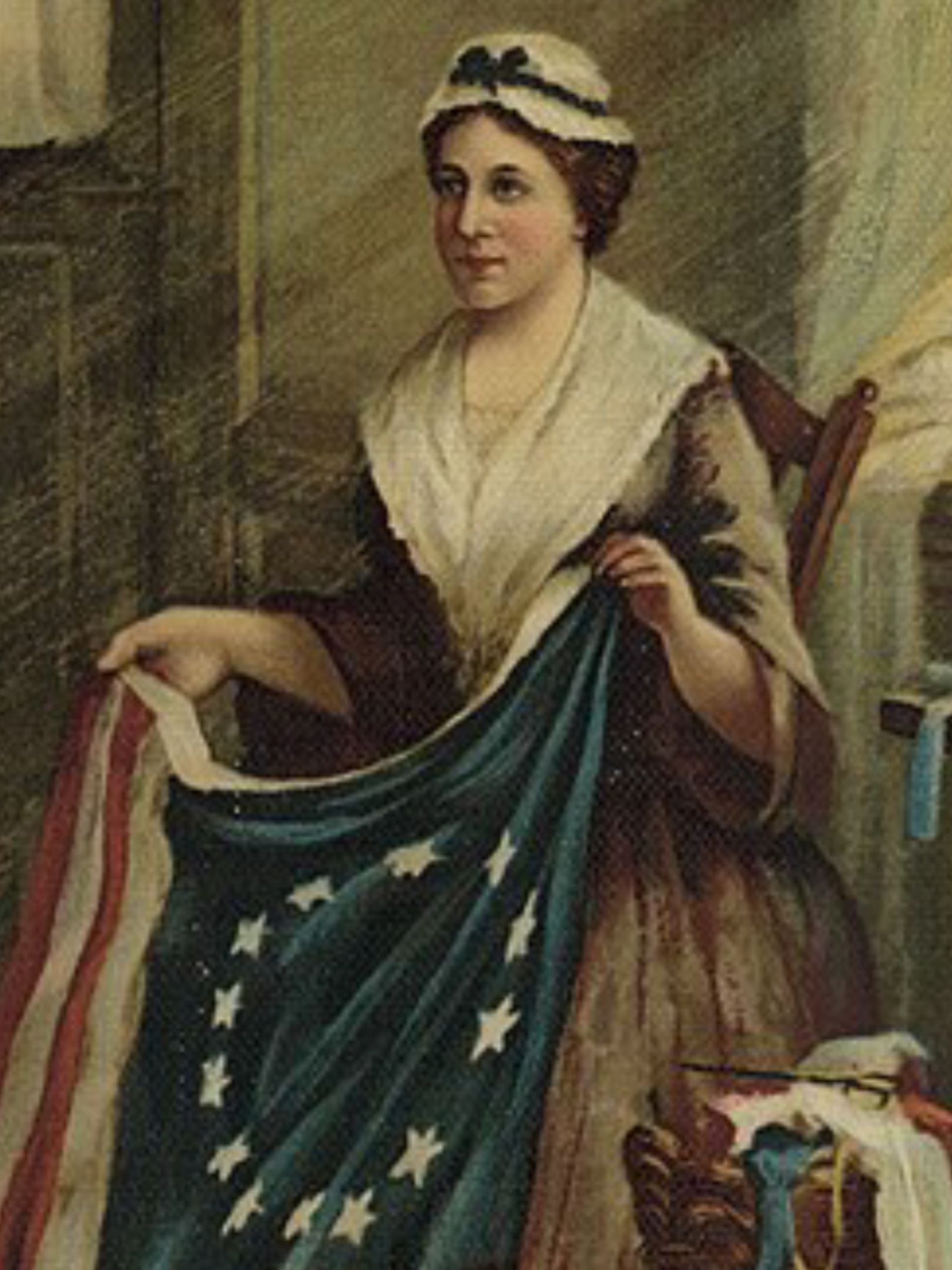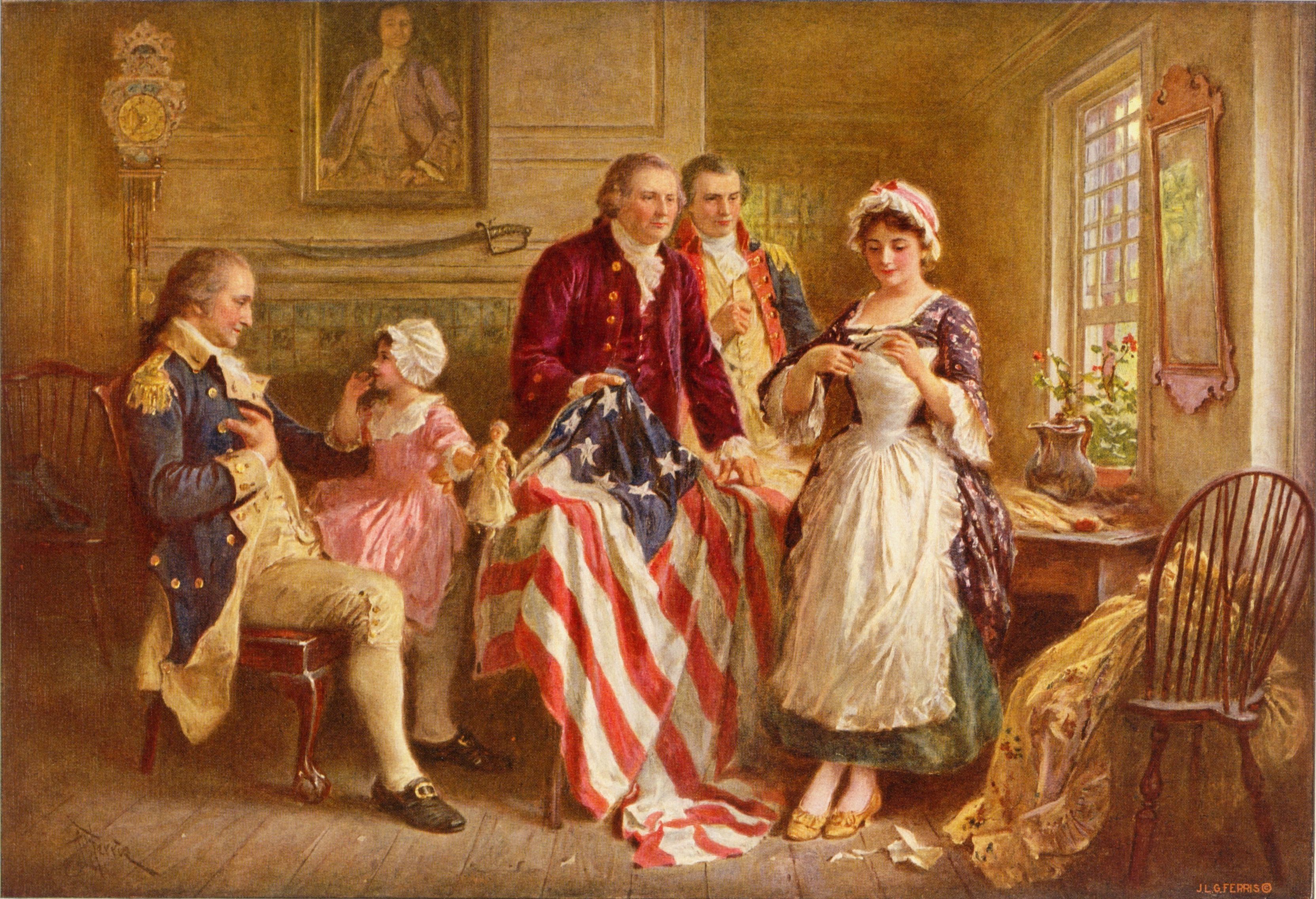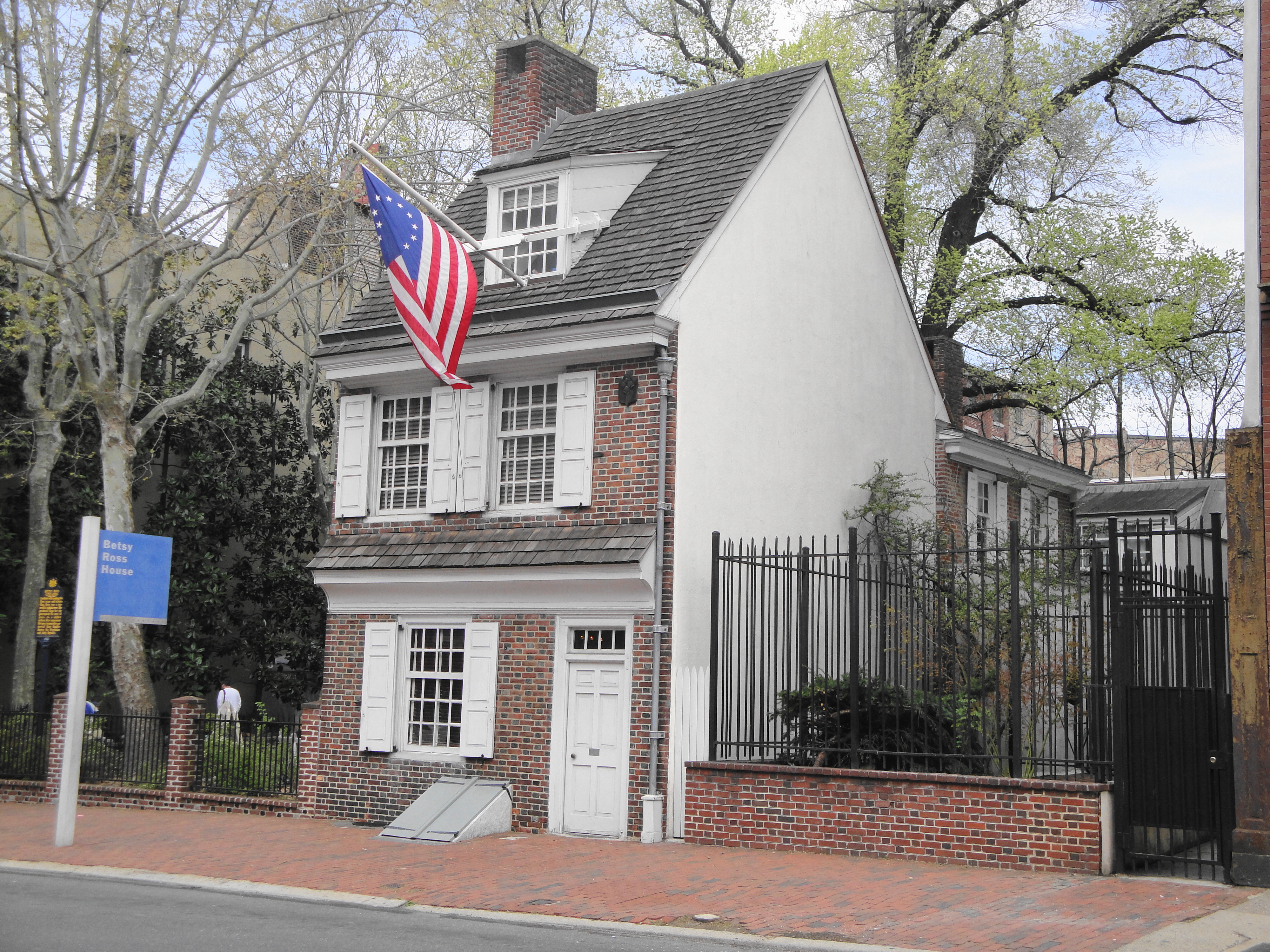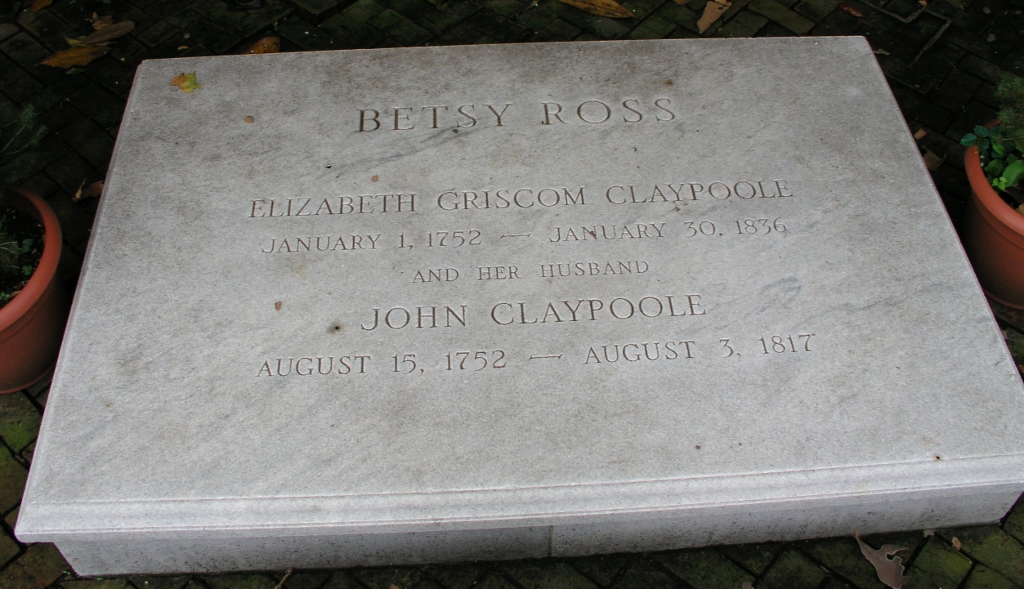Revolutionary War Figure. Born Elizabeth Griscom in Philadelphia, Pennsylvania, she has gained legendary status for her story of her role as a seamstress in the creation of the Flag of the United States, a legend that has no historical records to corroborate. A part of a devout Quaker family, she learned the seamstress and upholstery trade as a young woman and opened up her own seamstress business, which she successfully conducted through most of her adult life. She married John Ross in 1773, a move that had her expelled from the Quaker Church because Ross was an Anglican. When the Revolutionary War began, she wholeheartedly supported the Patriot cause with her seamstress skills by making blankets, tents, and cloth cartridges for musket balls. Her husband was a member of the Pennsylvania Militia and died supposedly in an accident in 1776. She was commissioned to make flags for the Pennsylvania Navy and continued to surreptitiously make supplies for Continental troops during the 1777 to 1778 British occupation of Philadelphia, despite the danger of being executed for treason if she was caught. She had married Joseph Ashburn in 1777. However, he was captured by the British Navy and died while being held in captivity in the Old Mill Prison in England. The man who brought the news to Betsy Ross about her second husband's death, John Claypool, had also been imprisoned in London and eventually became her third husband. After the end of the war and America gained its independence from Great Britain, she resided with her family on Arch Street in Philadelphia and worked as a seamstress until 1827. She lived to the age of eighty-four, died in 1836, and was interred in Philadelphia's Free Quaker Burial Ground on 5th Street. Twenty years later, her remains were removed to Philadelphia's Mount Moriah Cemetery. The legend of her participation in the creation of the first United States flag began in the 1870s when her nephew submitted a paper to the Pennsylvania Historical Society detailing the Revolutionary stories he had heard about his aunt. The main story consisted of relating how, in May 1776, she was commissioned by Continental Congressmen Robert Morris and George Ross (the uncle of her first husband) and General George Washington to sew the first standardized American flag with thirteen stripes and a blue field with thirteen stars in it, which had been designed by Francis Hopkinson. Betsy Ross's contribution was to change the stars from having six points to five points (making them easier to cut and sew). This story is doubted by historians in the present day, as there is no contemporary documentation of this event having happened. It was taken as fact during the 1876 United States Centennial celebration, and Betsy Ross was elevated as a legendary female Patriot figure, a status many today believe she deserves regardless of the flag legend. What was believed to be her and her husband's remains were removed from Mount Moriah Cemetery in 1975 during the United States Bicentennial celebration and were brought to the courtyard that was created by the house on Arch Street in Philadelphia, where it is believed she resided. Today, her grave is part of the Betsy Ross House complex and is visited by thousands of tourists each year.
Revolutionary War Figure. Born Elizabeth Griscom in Philadelphia, Pennsylvania, she has gained legendary status for her story of her role as a seamstress in the creation of the Flag of the United States, a legend that has no historical records to corroborate. A part of a devout Quaker family, she learned the seamstress and upholstery trade as a young woman and opened up her own seamstress business, which she successfully conducted through most of her adult life. She married John Ross in 1773, a move that had her expelled from the Quaker Church because Ross was an Anglican. When the Revolutionary War began, she wholeheartedly supported the Patriot cause with her seamstress skills by making blankets, tents, and cloth cartridges for musket balls. Her husband was a member of the Pennsylvania Militia and died supposedly in an accident in 1776. She was commissioned to make flags for the Pennsylvania Navy and continued to surreptitiously make supplies for Continental troops during the 1777 to 1778 British occupation of Philadelphia, despite the danger of being executed for treason if she was caught. She had married Joseph Ashburn in 1777. However, he was captured by the British Navy and died while being held in captivity in the Old Mill Prison in England. The man who brought the news to Betsy Ross about her second husband's death, John Claypool, had also been imprisoned in London and eventually became her third husband. After the end of the war and America gained its independence from Great Britain, she resided with her family on Arch Street in Philadelphia and worked as a seamstress until 1827. She lived to the age of eighty-four, died in 1836, and was interred in Philadelphia's Free Quaker Burial Ground on 5th Street. Twenty years later, her remains were removed to Philadelphia's Mount Moriah Cemetery. The legend of her participation in the creation of the first United States flag began in the 1870s when her nephew submitted a paper to the Pennsylvania Historical Society detailing the Revolutionary stories he had heard about his aunt. The main story consisted of relating how, in May 1776, she was commissioned by Continental Congressmen Robert Morris and George Ross (the uncle of her first husband) and General George Washington to sew the first standardized American flag with thirteen stripes and a blue field with thirteen stars in it, which had been designed by Francis Hopkinson. Betsy Ross's contribution was to change the stars from having six points to five points (making them easier to cut and sew). This story is doubted by historians in the present day, as there is no contemporary documentation of this event having happened. It was taken as fact during the 1876 United States Centennial celebration, and Betsy Ross was elevated as a legendary female Patriot figure, a status many today believe she deserves regardless of the flag legend. What was believed to be her and her husband's remains were removed from Mount Moriah Cemetery in 1975 during the United States Bicentennial celebration and were brought to the courtyard that was created by the house on Arch Street in Philadelphia, where it is believed she resided. Today, her grave is part of the Betsy Ross House complex and is visited by thousands of tourists each year.
Bio by: RPD2
Inscription
Betsy Ross
Elizabeth Griscom Claypoole
January 1, 1752 - January 20, 1836
and her husband
John Claypoole
August 15, 1752 - August 3, 1817
Family Members
Advertisement
See more Ross memorials in:
Records on Ancestry
Sponsored by Ancestry
Advertisement
